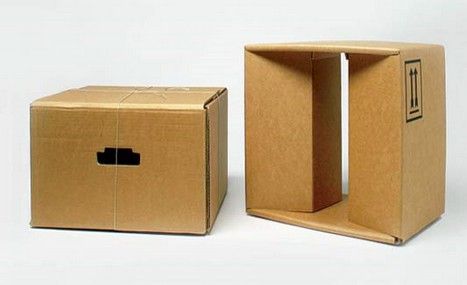Ecommerce is a process of buying or selling products and services online. The modern electronic commerce typically uses the World Wide Web for at least one part of the transaction life cycle. Ecommerce allows consumers to electronically exchange goods and services with no barriers in time or distance. It covers a vast range of businesses, ranging from consumer based retail sites, through auction or music sites, to business exchanges trading goods and services between corporations.
The evolution of Ecommerce Packaging with Online Sales
With the passage of time, ecommerce packaging supplies system has kept evolving. It has changed with the changing demands and expectations of online consumers. Further, packaging has also created competition among brands through innovative standards like customer touch points, providing scam less and rapid delivery service, giving regular updates on order status and facilitating tracking details.
Corrugated Boxes: – Corrugated boxes are a very common and widely used packaging material for ecommerce industry. It is one of the most popular packaging techniques because it offers strength and high durability.
Courier Bags: – It is a flexible pouch which is widely used for shipping purposes. It has specialized features like tamper evidence bubble on POD jackets. It provides high strength and is water resistance.
Securities Envelopes: – The securities envelopes help in securing product from counterfeiting. These are of various forms: paper- based, Kraft based and metallic multilayer bubble envelops. These are vitally used to ship documents in secured manners.
Protective Packaging: – Protective packagings are Styrofoam based and come as incredibly light weight e-shaped materials. They fill the packaging gaps and give enhanced cushioning to the package contents. This type of packaging offers the advantage of reduced posting and shipping costs, due to their lighter weight.
Purpose:
1. Physical protection: – The objects enclosed in the package may require protection from counterfeiting and among other things like mechanical shock, vibration, electrostatic discharge, compression and temperature.
2. Containment or agglomeration: – Small objects are typically grouped together in one package for reasons of storage and selling efficiency.
3. Information transmission: – Packages and labels communicate how to use, transport, recycle or dispose of the package or product.
4. Marketing: – Packaging and labels can be used by markets to encourage potential buyers to purchase a product.
5. Graphic design and physical design have been important and constantly evolving phenomenon for several decades.
Packaging Types:
1. Primary Packaging: – It is the material that first envelopes the product and holds it. This usually is the smallest unit of distribution on use and is the package which is in direct contact with the context.
2. Secondary Packaging: – It is outside the primary packaging and may be used to prevent pilferage or to group primary packages together.
3. Tertiary or Transit Packaging: – It is used for bulk handling warehouse storage and transport shipping. The most common form is a palletized unit packed tightly into container.
Packaging can be described as a coordinated system of preparing goods for transport. It has its best use in warehousing, logistic, sale and end use. Perfectly packaged product doesn’t just make the shipment look good but also keeps contents secure and protects it from environmental hazards. Depending on the type of product, manufacturers are regularly coming up with new ideas to achieve competitive advantage with their packaging.





